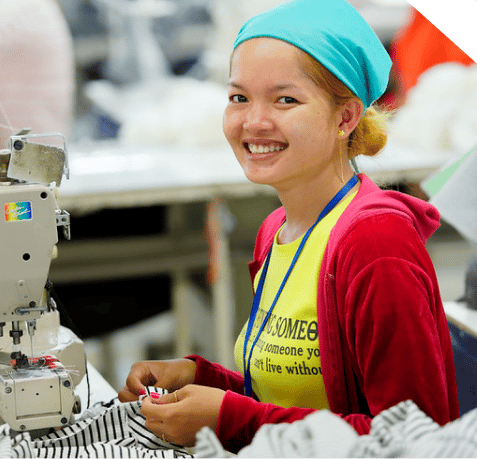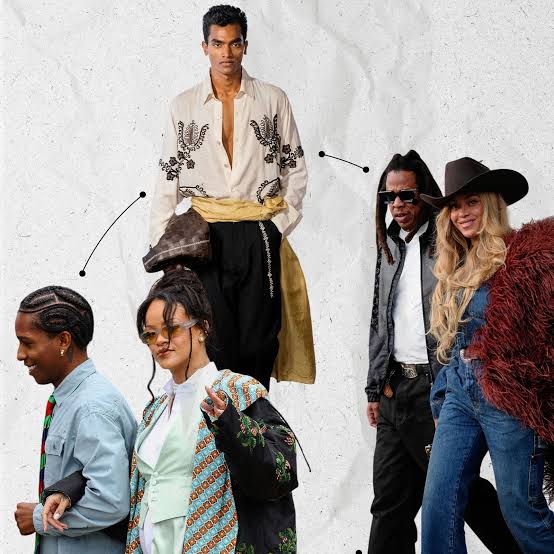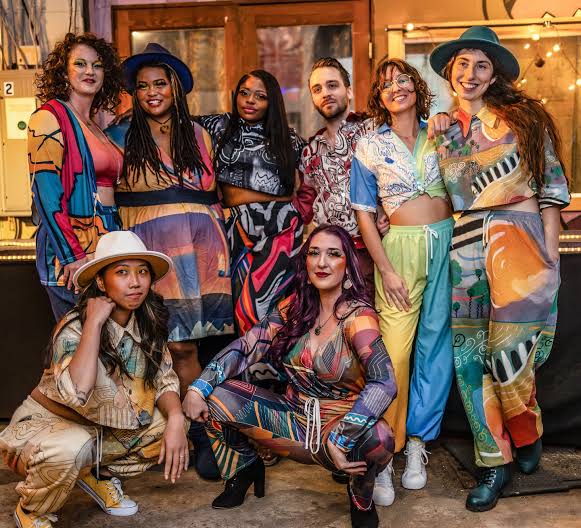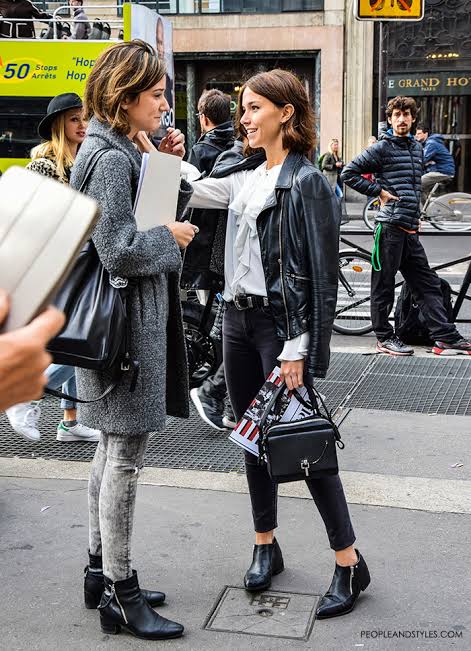It is a scientifically proven fact that Fashion impacts your health. It has however positive as well as negative impacts due to our choice or selection. Therefore, we need to balance our choice, style, comfort, and sustainability in order to live healthy life style.
Modern research indicates that fast fashion accounts for 20% of global water pollution. However, the clothes we wear also influence our physical and mental well-being. High heels can lead to back pain, while colorful outfits may improve our mood.
This article looks at how your style choices impact your body, mind, and the planet. It also provides practical tips for balancing fashion with health and sustainability. Similarly, this piece of writing offers some deep insights for fashion education and designing curriculum developers.
Let’s now read this insightful piece of writing and learn about some informative facts.

Photo credit: L’Officiel Monaco
💃Physical Health and Fashion: Risks and Solutions
The Hidden Dangers of Trendy Clothing
Fashion often focuses on looks rather than health, which can create physical risks:
High Heels: Wearing them regularly shortens calf muscles, leads to bunions, and raises the risk of arthritis. In the U.S., bunion surgery costs between $3,500 and $12,000.
Tight Clothing: Skinny jeans and shapewear can compress nerves, cause thrush in women, or reduce sperm count in men due to overheating. Tight ties may cut off blood flow, leading to headaches.
Fast Fashion Chemicals: Inexpensive clothes often contain formaldehyde and other toxins that can enter the skin, possibly leading to endocrine problems or antibiotic resistance.
Historically, fashion has posed health risks. Victorian corsets restricted breathing but caused minimal permanent damage. Large skirts in the 1900s spread germs like tuberculosis, and Chinese foot-binding changed foot anatomy.

Photo credit: Jodie Mitchell
🙋♀️ Healthier Fashion Choices
Modern fashion offers options to support physical health:
Activewear and Athleisure: Comfortable, breathable materials found in athleisure promote movement. Brands like Lululemon design for both style and practicality.
Sustainable Fabrics: Organic cotton and bamboo lower exposure to harmful chemicals, which benefits skin health. FIRMA Energywear uses bioactive minerals to improve circulation and reduce muscle fatigue.
Ergonomic Designs: Adaptive fashion for people with disabilities and UV-protective clothing shields the body from environmental harm, merging health with style.

Photo credit: Forbes
🤸♀️Mental Health and Fashion: Boosts and Challenges
Fashion as a Mood Booster
Clothing can improve mental health through self-expression:
Dopamine Dressing: Wearing bright colors or favorite outfits can trigger a dopamine release that lifts your mood. A 2012 study in the Journal of Experimental Social Psychology showed that clothing affects psychological states, and psychiatrists assess mental health based on attire.
Self-Expression: Selecting outfits that reflect your identity builds confidence and helps reduce depression. Mindful dressing can serve as self-care and encourage creativity.

Photo credit: HELLO! Magazine
🌚The Dark Side of Fashion Trends
Fashion can also negatively affect mental health:
Body Image Pressure: Media-driven ideals, like the thin model standard, lead to body dissatisfaction and eating disorders, especially among young women.
Risky Practices: Tanning or wearing stilettos to meet beauty standards raises the chances of skin cancer or joint injury. A 2023 study found that interest in fashion often overshadows perceived health risks.

Photo credit: Times Now
☘ Environmental and Social Health: Fashion’s Broader Impact
The Cost of Fast Fashion
The fast fashion industry, which makes trendy, inexpensive clothing, has serious consequences:
Environmental Pollution: Untreated dyes and textile waste contaminate water sources, contributing to 20% of global water pollution, according to Fashion Revolution reports.
Worker Health: Garment workers in countries like Bangladesh face toxic chemical exposure, resulting in high cancer and skin condition rates.

Photo credit: Better Work
🌿Sustainable Fashion for a Healthier Planet
Sustainable fashion helps reduce these harms:
Eco-Friendly Materials: Recycled polyester and organic cotton lessen environmental and chemical exposure for both consumers and workers.
Ethical Brands: Companies like Patagonia focus on fair labor and sustainable production, improving both social and environmental health.
Fashion Health Initiatives: Projects such as Fashion Health (fashionhealth.co) use gamified education to raise awareness about toxic textiles and encourage healthier choices.

Photo credit: Vogue Business
🎯 Practical Tips for Healthier Fashion Choices
Prioritize Comfort: Choose athleisure or loose-fitting clothing to prevent nerve compression and encourage movement. Look for adaptive fashion to be inclusive.
Opt for Sustainable Fabrics: Pick organic cotton, bamboo, or recycled materials to lower chemical exposure and environmental damage.
Practice Mindful Shopping: Avoid trend-driven items that may harm your health, such as very tight jeans or chemically treated fast fashion.
Support Ethical Brands: Research brands with transparent supply chains, like those recommended by Fashion Revolution.
Incorporate Dopamine Dressing: Wear colors and styles that boost your mood, like bright scarves or personal accessories.

Photo credit: Facebook
🤚FAQs About Fashion and Health
1. How does fashion affect physical health?
Ans: Fashion can harm or help your body. High heels and tight clothing may cause pain or nerve issues, while activewear and sustainable fabrics like organic cotton promote comfort and reduce chemical exposure.
2. Can clothing improve mental health?
Ans: Yes! Dopamine dressing—wearing vibrant or favorite outfits—boosts mood by triggering dopamine. Choosing clothes that reflect your identity can increase confidence and reduce stress.
3. What are the health risks of fast fashion?
Ans: Fast fashion often contains toxins like formaldehyde, which may result in skin irritation or endocrine problems. It also pollutes water sources and exposes garment workers to harmful chemicals, raising cancer risks.
4. How can I choose sustainable fashion?
Ans: Choose brands that use organic cotton, bamboo, or recycled materials. Research ethical companies, like Patagonia, or check Fashion Revolution for brands with transparent supply chains.
5. What is dopamine dressing?
Ans: Dopamine dressing means wearing colors, patterns, or outfits you love to improve your mood. Bright colors, like yellow, or personal favorites can boost mental well-being.
6. Are there fashion options for people with disabilities?
Ans: Yes, adaptive fashion brands create clothing for accessibility, featuring elements like magnetic closures or adjustable fits to promote comfort and inclusivity.

Photo credit: Fable England
Conclusion: Fashion is Evolving and Improving in 21st Century
Fashion does more than affect style—it strongly influences your physical, mental, and environmental health. By choosing comfortable, sustainable, and expressive clothing, you can look good, feel great, and support a healthier planet.
Start small: replace one fast fashion item with an eco-friendly alternative or wear something that brings you joy.
Share your healthy fashion tips on platforms like X, Instagram, Facebook, and LinkedIn using #FashionHealth to inspire others!
Do you find this piece of writing very much informative and insightful? Let me know your opinion in the comments section. Don’t forget to share this article on different digital platforms.

Photo credit: Fashion Trends and Street Style
✍Blog Author: RAJA BAHAR KHAN SOOMRO

Top 10 Shorts Trends for Summer 2025: The Styles, Colors and Fits to Fall in Love With
Sensory Style: Romantic Dressing for Synesthetic Senses – A New Fashion Frontier
Texworld NYC 2025: A Deep Dive into Sustainable Textiles & Eco-Friendly Fashion Trends
The Devil Wears Prada 2: From 2006’s Trends to 2026’s Digital Dominance – A Costume Design Deep Dive
Recommend0 recommendationsPublished in apparel, celebrity fashion, Health, Our Fashion Passion, Petite, Plus Size, Pop Fashion, Skin Care, street style, Uncategorized











